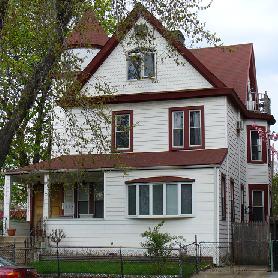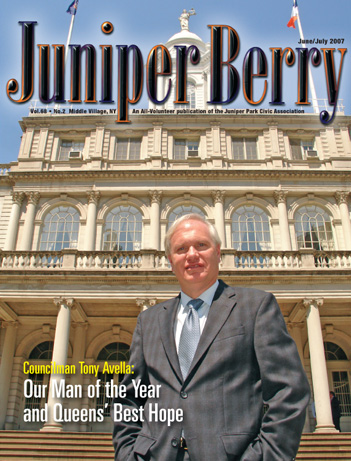The May 14th, 2007 Daily News article entitled “Much is Hanging on Bridge” refers to the process of eminent domain that will be necessary in order to erect a new Kosciuszko Bridge. The May 3rd-9th, 2007 edition of the Queens Tribune featured an article displaying the new mega development that would replace the junk-yards and small business that are located in Willets Point through the exercise of eminent domain and the City’s authority to remove what has been defined as blight. These are two different cases with two completely different goals, but both are using the city’s power of eminent domain. In my opinion, one is a proper application of the principle, but the other is very, very wrong.
The legal ramifications of eminent domain are far-reaching, costly, time-consuming, and, at times, unfair. The 2005 U.S. Supreme Court’s 5 to 4 decision in Kelso vs. The City of New London affirmed a municipality’s authority to take private property under the misguided concept and interpretation of the word blight and hand it over to a developer to build condos and associated amenities. This decision threatens everyone’s property. As a matter of fact, it also threatens those who rent or lease property that is condemned.
According to Webster’s Dictionary, one of the connotations of the word “blight” is “anything that destroys, prevents growth,” etc. For example, slums are a blight on a city.
The definition of “eminent domain” according to Black’s Law Dictionary is “the power to take private property for public use by the state, municipalities and private persons or corporation authorized to exercise functions of public character.” In the United States, the power of eminent domain is found in both the federal (Fifth Amendment) and individual states’ constitutions. Eminent domain is the highest and most exact idea of property remaining in the government, or in the aggregate body of the people in their sovereign capacity. It gives a right to resume the possession of the property in the manner directed by the constitution and the laws of the state, whenever the public interest requires it. The process of exercising the power of eminent domain is commonly referred to as “condemnation” or “expropriation.”
Historically, the clause in the Fifth Amendment to the U.S. Constitution, “nor shall private property be taken for public use without just compensation” has been synonymous with “used by the public.” The building of roads, bridges, schools, libraries, post offices and other public projects is an acceptable and understood interpretation of the Fifth Amendment. Locally, the taking of land in order to expand the Long Island Railroad in Woodside and Sunnyside and the AirTrain in Jamaica, as well as the taking of land in West Maspeth in order to rebuild the Kosciuszko Bridge, though unfortunate for those directly affected, are examples of eminent domain applied appropriately for the greater good of this city’s residents.
However, in recent times, eminent domain applied in order to clean up a “blighted area” or “slum” has clearly been abused in many cases. As noted by Mayor Cain of Lakewood Ohio, “Blight is now a statutory term and has nothing to do with how well your house and your neighbor’s house are maintained. The question is whether or not that area can be used for a high or better use.”
Governments are always thirsty for more tax revenue, and when they have the power to quench their thirst through eminent domain, no one’s home, business or church is safe. When real estate developers can use the government to act as their agent to take private property and the government does so in order to create an area with a higher tax base, the government has manifested the most evil, insidious power of eminent domain. In New York City, the evil aspect of eminent domain is threatening to thrust itself into every neighborhood in the city, and is already happening in the neighborhood surrounding Atlantic Yards in Brooklyn and will likely happen at Willets Point here in Queens. And let us not forget Manhattan, where New York State forced a man to sell a corner that his family owned for more than 100 years. And, what went up… a courthouse, a school? Nope, what instead was erected was a new headquarters for the New York Times.
I will close this introduction into the darkness of eminent domain with a quote from George Sutherland, Associate Justice of the United States Supreme Court 1921:
“The three great rights are so bound together as to be one right. To give a man his life but deny him his liberty is to take from him all that his life is worth living. To give him his liberty but take from him his property which is the fruit and badge of his liberty is to still leave him a slave.”




